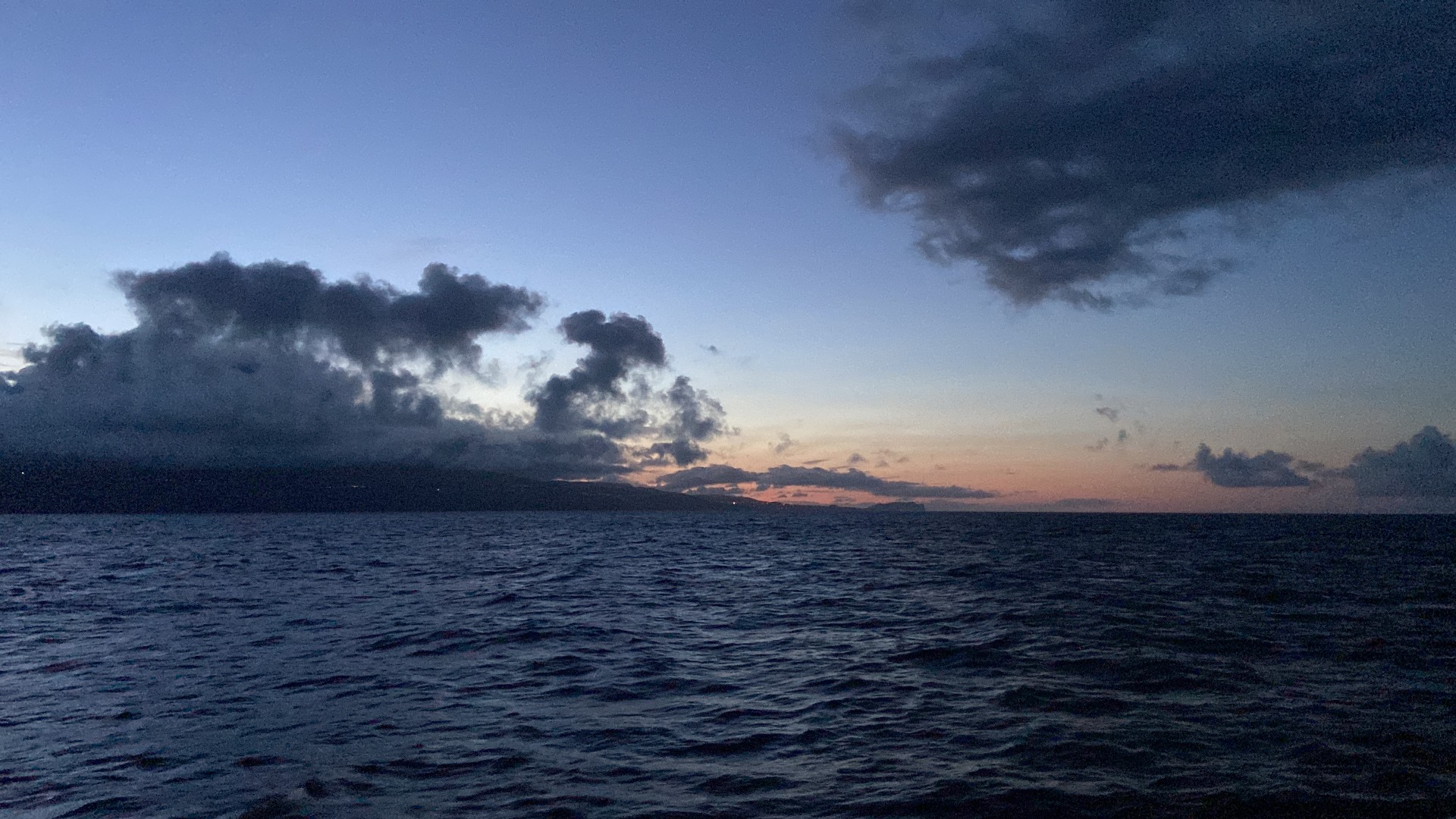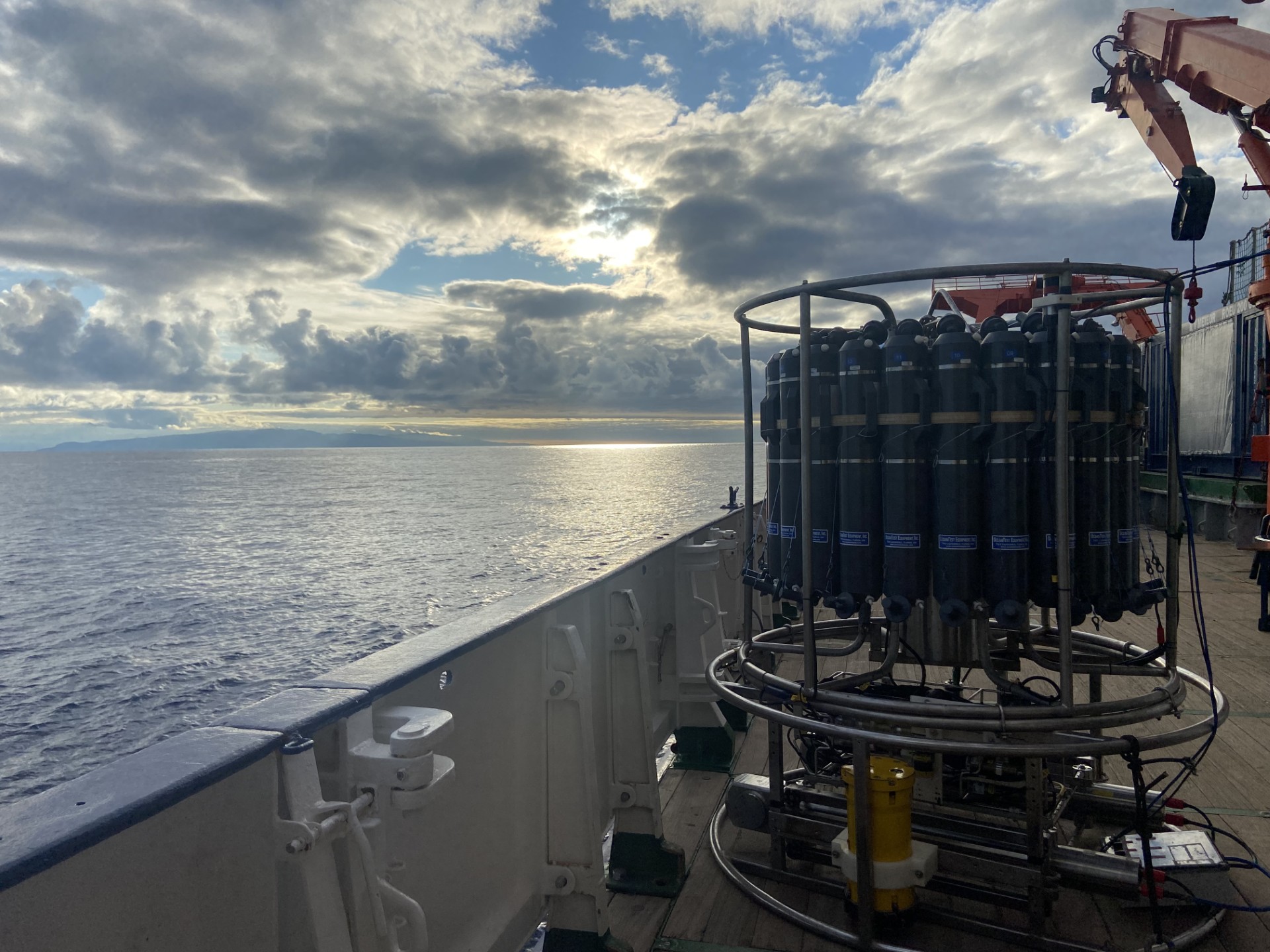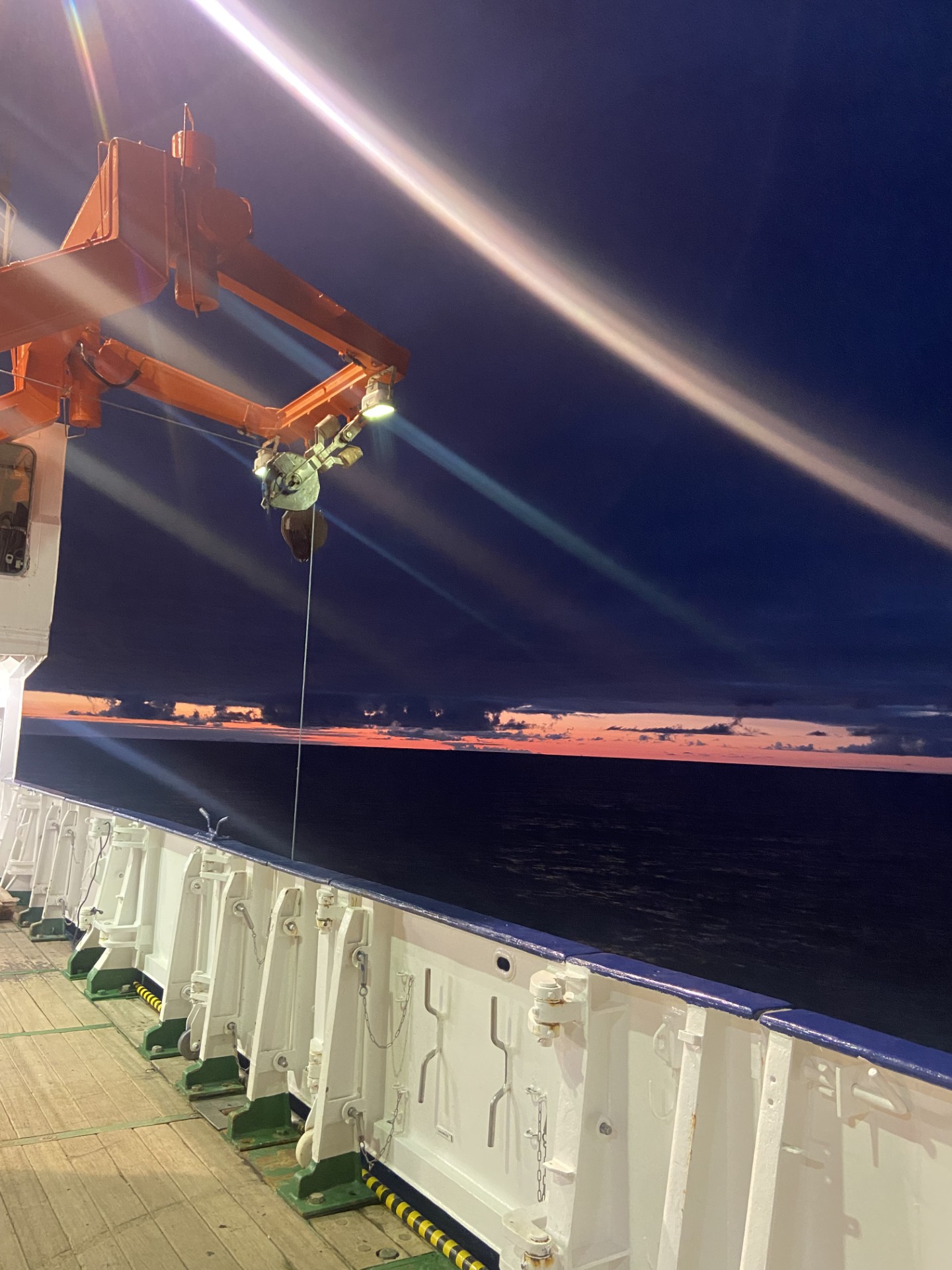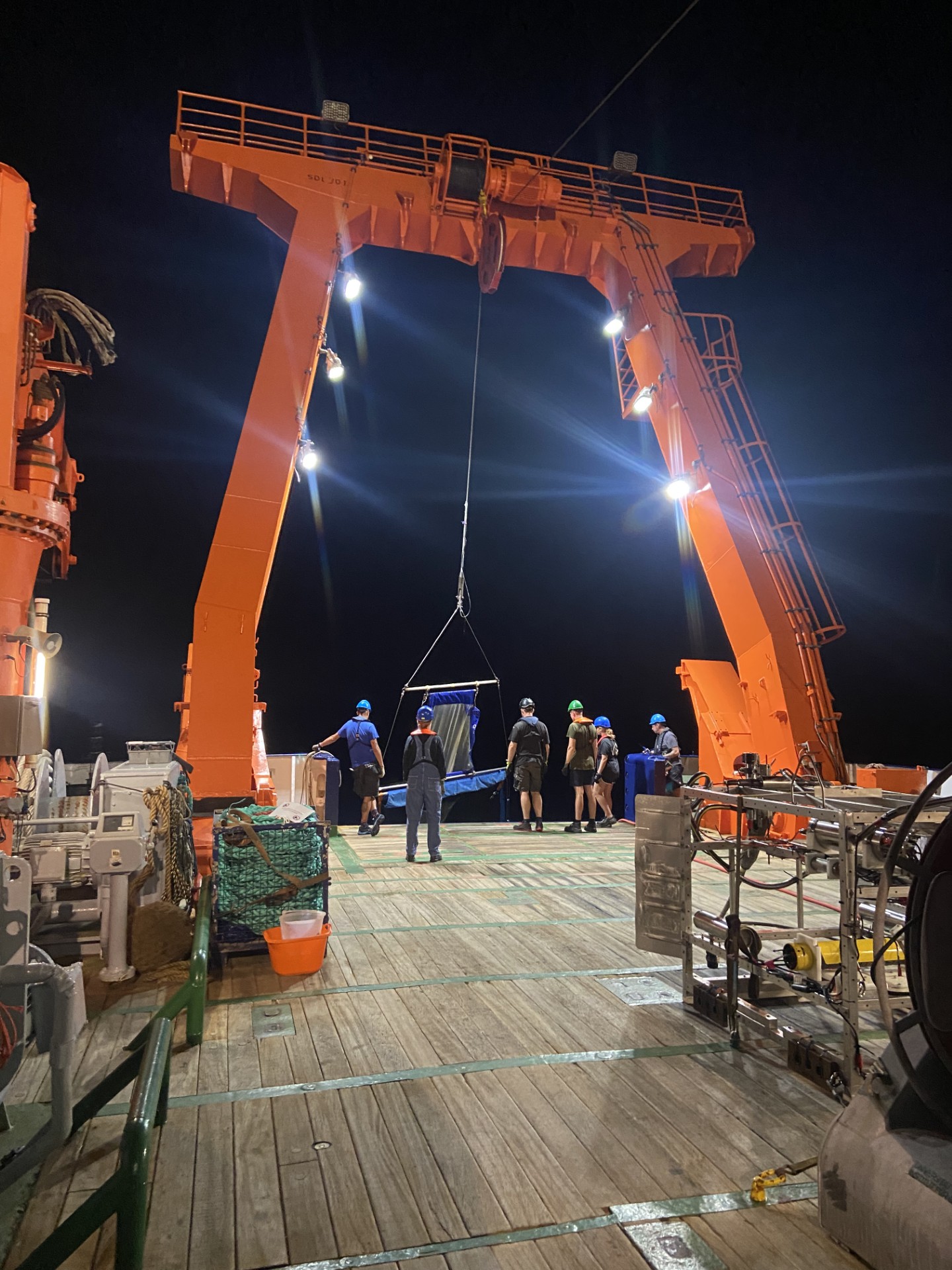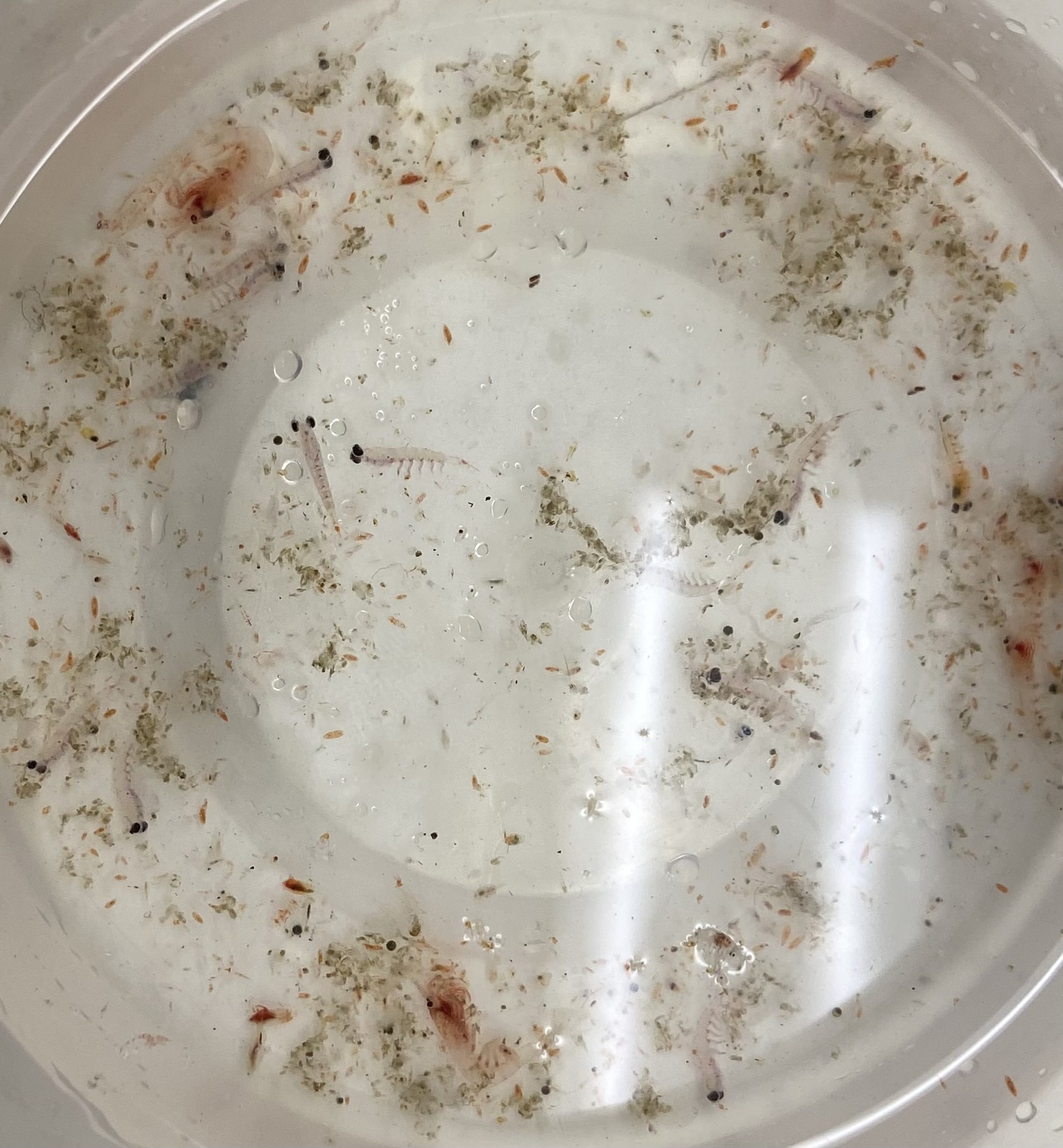by Eleonora Puccinelli
You’ll find some of the smallest things on earth living in the ocean from the surface to the seafloor. Despite their teeny tiny size, these organisms are the ones literally getting the ball rolling. We call them plankton, and we can separate them into phytoplankton and zooplankton.
Phytoplankton are microscopic plant-like organisms, you can picture them as the grass of the sea, and zooplankton their main predator. These two groups come in a variety of shapes and colors, and most of them like to eat different things. My research focuses on understanding how much food is produced by phytoplankton, how much is eaten by zooplankton, whether different groups eat different things, and, most importantly, the quality of the food.
Quality, right? How do I check the quality of what they eat? There are a number of different tools to use, but my favorite is looking at the lipid and fatty acid profiles of these animals, focusing mostly on the so-called omega-3. Omega-3 are a specific group of fatty acids that we all need to function well. These omega-3 fatty acids are mostly produced by phytoplankton in the ocean, yes the microscopic organisms. Consumers such as zooplankton, fish, and humans cannot produce enough omega-3 on their own and must obtain them from their food. Yes, you heard right—phytoplankton supports the entire food chain, getting the ball rolling.
What do I do during the cruise? I gather information on the amount of lipids and fatty acids in both phytoplankton and zooplankton, and I also get to know which species are in the water.
How do I do it? I filter a lot of water to get information on phytoplankton collected using a CTD. And by a lot of water, I mean a lot! I calculated that by the end of the cruise, I will have filtered approximately 570 liters of water.
But I also get to look at some fascinating zooplankton samples that we collect using nets. They are so pretty!
I also run on-deck experiments where I measure how much lipids and fatty acid are produced by phytoplankton in a day.

A lot of laboratory work is waiting for me and my students once back on land, but in the meantime I get to enjoy beautiful sunrises and sunsets, whale and bird spotting, exploring what the other teams are doing, in between some water filtration.
